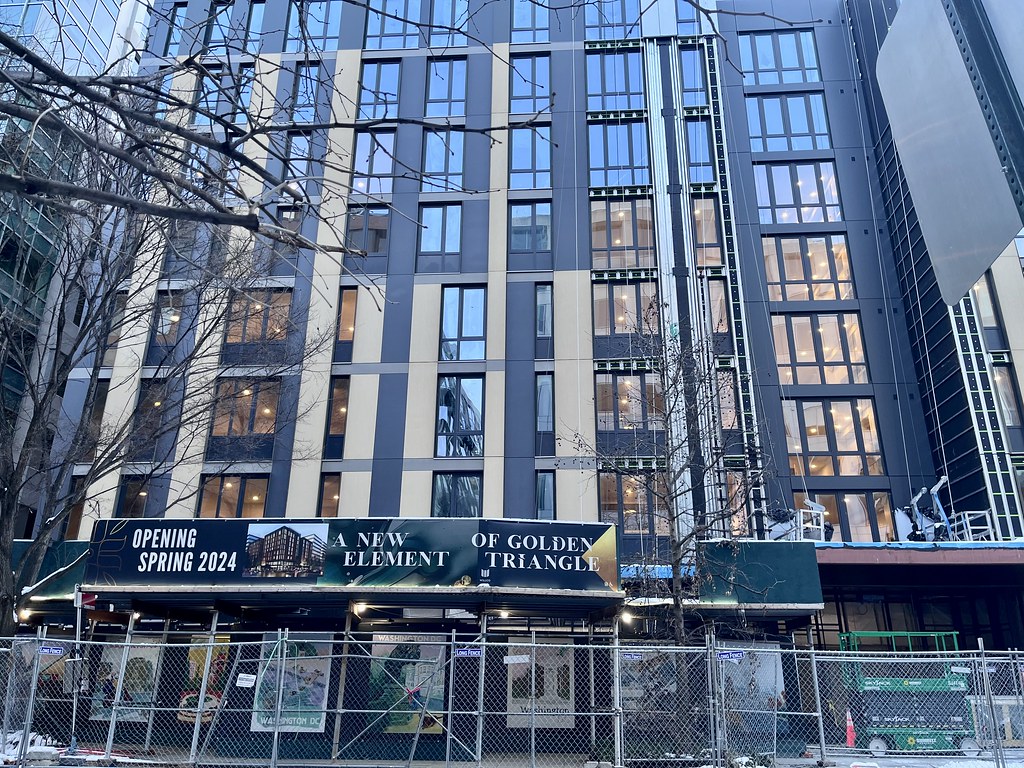
2100 M St NW – that has to be a typo, I thought to myself, as I read the announcement the Artomatic was returning in March.
With a need for tens of thousands of square feet for artists, they must’ve meant 2100 M St SW or SE. The massive free art show is typically done in transitional neighborhoods using buildings that have just been constructed or about to be torn down. Past shows have occurred in NoMa, Waterfront and other locations just before they were gentrified.
2100 M St NW is prime downtown real estate – or is it?
In fact, the building has been empty for years. Constructed in 1969, it housed the headquarters of the Urban Institute until 2017. Since then, it’s been boarded-up and empty. It will be converted into multifamily housing.
Covid accelerated a trend toward telework that existed before the pandemic. Now, most white collar workers in DC are remote for at least part of the week. With fewer people going to offices, fewer offices are needed.
I haven’t been in an office since March, 2020. But before then, I worked for a variety of organizations in downtown DC, taking part in the familiar rituals and customs of office life that now seem outdated and strange – wearing a tie, signing birthday cards for coworkers, going to happy hour with your boss.
With so much memory imprinted upon my brain, I imagined that this life still exists downtown. But it doesn’t.
Instead, what once was the heart of the white collar world in DC, now has empty storefronts and ghost buildings lacking workers.
The good news is that some of these buildings are being converted to much-needed housing. In addition to 2100 M St NW, other nearby office buildings are being converted to apartments, including one at 20th and L, former home to the Peace Corps.
My first job out of college was across the street. Never did I imagine that people would one day live in what was the bustling heart of the “office district.”

2100 M St NW was too ideal of a location to stay empty forever. Located between Dupont Circle and George Washington University, with two Metro lines nearby, and lots of foot traffic, Artomatic will thrive there when it opens in March.
And it will make a convenient, walkable home for hundreds of people when it becomes apartments. This is much better for DC than office workers who commute in from the suburbs and leave.
That is what’s great about cities – they change and adapt, capable of turning cubicle farms into space for artists and then transforming into housing for families.
Artomatic runs from March 8 to April 28. It’s free and will feature hundreds of artists and performers. Don’t miss it!